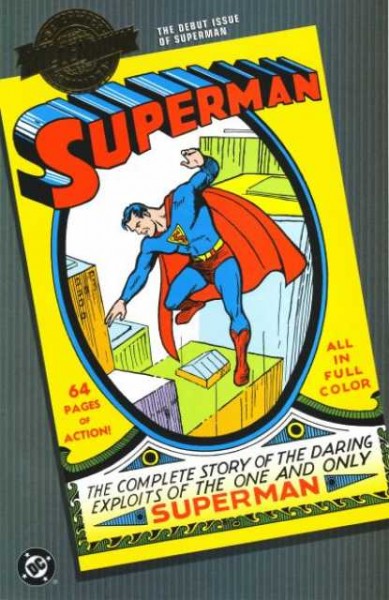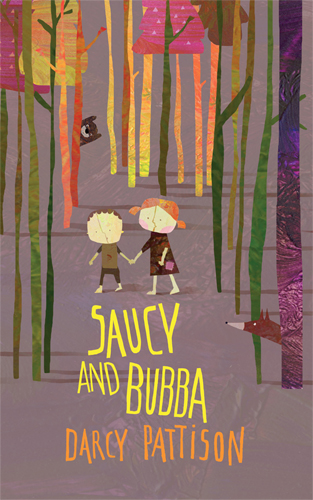We don’t write in a vacuum. Your story is in the context of the whole of literature, and specifically, the literature of your genre. How does your story add to, change, enhance the conversation?

The reproduction starts with an introduction to the comic:
Until 1938 most comics were usually filled with reprint material spotlighting the more successful newspaper strips of the day. And while ACTION COMICS was one of the first titles filled with original material–created from scratch for less money than it would have cost to reprint existing comic strips–few could have been ready for the sensation its cover-featured star would cause! ACTION #1 spotlighted the debut performance of the world’s first–and still foremost–superhero: SUPERMAN!
This puts the fist story of Superman into context. No wonder there’s no mention of Jor-el and the struggle on Krypton (which is expounded in recent films). Mr. and Mrs. Kent are just described as an elderly couple. Clark’s first exploit is to prevent a lynching, then catch a singer who “rubbed out” her lover for cheating on her, and then to stop an incident of domestic violence. Not the stuff of super-fame. The stakes are low–Superman isn’t saving the world here.
But in the context of comics that just reprinted comic strips from the newspapers, Wow! Again, Wow! This was great stuff.
Two things strike me here: First, Superman had a humble beginning. Too often today, humble beginnings are overlooked or not allowed to even see the light of day. We want a fully developed story, with super-hero characters. But these type characters often need a small beginning. They develop over time as the story becomes part of the culture and join the conversations of our time. If the story captures any part of our imagination, they will become part of the conversation and the characters, the story, the plotlines–everything–will grow and develop. I wish there was a way to let more stories do this, to begin small, to join the conversations and to develop. Witness the Superman legends today, with rich back story on his parents, his struggles to fit into Earth, the dangers from other Kryptonite survivors, his love life with Lois Lane and so on.
Second, Superman was a product of 1938. His story joined the conversation of his time. His first act was to prevent a lynching. Would that speak to today’s audience? No. Domestic violence? Shrug. We’ve seen so many stories that are much better than the nine panels devoted to this small subplot.
How Does Your Story Join the Conversation
Today, werewolves and zombies are having a rich conversation in our culture. You’d have to be an ostrich to know nothing at all of the influx of werewolves stories. Well–if truth be told, I am almost an ostrich on these two subjects. Until I read Red Moon by Benjamin Percy, who brings the werewolf story alive in new ways. (Actually, I’m linking here to the audio version because the author narrates his own story in an impossibly deep voice that is fascinating to listen to.) This is no “Cry Wolf” story, but a fascinating look at how the ancient legend could possibly affect our lives today; and it’s told with impeccable prose that fascinated me with its amazing storytelling.
I shunned the whole zombie thing until my hairdresser raved about “Warm Bodies,” a movie that took Shakespeare’s Romeo and Juliet and updated it with zombies. Really? You could DO that? In other words, zombies were joining the conversation about romance and love. How do the things that separate men and women affect our lives? Can love really change things?
In other words, it’s almost impossible to live in today’s world and not know something about zombies and werewolves. The literary conversation is littered with these conversations that make connections which weave in and out of the canon of English and Western literature.

It’s like the original Superman comic: in today’s terms, it’s cliched. But it was hugely original for it’s time. It added to the conversations about justice and law-enforcement in interesting ways. If I simply repeated the Hansel and Gretel fairy tale, it would be a flop. Instead, we must think about how our stories fit into the context of our times. We must strive to join the conversation and to have something to add to the conversation. How can we add something different, interesting, conflicting, nuanced and so on? How are you enriching the conversation? How are you changing the conversation?
How does YOUR story join the conversation of our times?